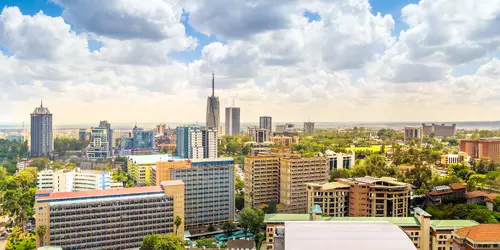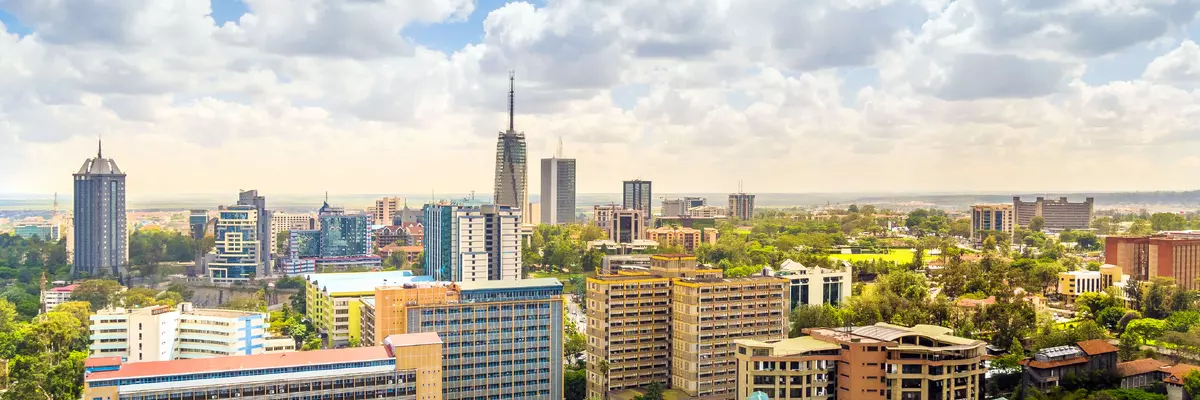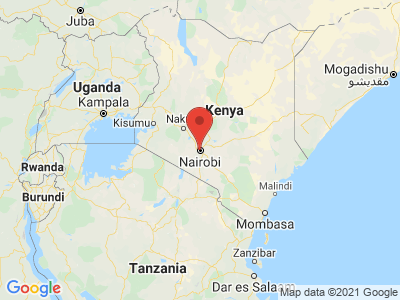Climate Table Nairobi
Jan | Feb | Mar | Apr | May | Jun | Jul | Aug | Sep | Oct | Nov | Dec | |
|---|---|---|---|---|---|---|---|---|---|---|---|---|
| Max. Temperature | 24° | 26° | 26° | 24° | 23° | 22° | 21° | 22° | 24° | 25° | 23° | 23° |
| Min. Temperature | 11° | 11° | 13° | 14° | 13° | 11° | 9° | 10° | 10° | 12° | 13° | 13° |
| Sun Hours | 9 | 9 | 8 | 7 | 6 | 6 | 4 | 4 | 6 | 7 | 7 | 8 |
| Rain Days | 5 | 5 | 11 | 13 | 14 | 11 | 9 | 10 | 10 | 12 | 13 | 13 |
The climate year of Nairobi
"Enkare Nyarobi" is a term from the Maasai language and eponymous for the name of the capital of Kenya. It means "place of cool water" and refers to the Nairobi River, which flows through the city.
Nairobi is located slightly south of the equator and thus in the intratropical climate zone. In the midst of the Kenyan highlands, Nairobi settled at an altitude of over 1,600 meters. This explains the city's unique temperate climate. As temperatures decrease with increasing altitude, the climate remains relatively pleasant throughout the year. This difference becomes clear, for example, in comparison with the coastal city of Mombasa, which has consistently high tropical temperatures.
However, even Nairobi is not spared from the rainy seasons that occur twice a year.
General information about Nairobi
Nairobi is often wrongly seen only as a starting point for safaris or the longed-for beach vacation on the coast. It is true that safaris to the Masai Mara or the Amboseli National Park can be easily organized from Nairobi. Nevertheless, it is also worth spending a few days in the capital. In the business district, modern skyscrapers line up with colonial buildings. From Uhuru Park, the city's green oasis, you have a beautiful view of the countless skyscrapers.
Visits to the Langatta Giraffe Center and Daphne Sheldrick's elephant orphanage are also highly recommended. Those interested can also visit original filming locations of the movie "Beyond Africa" or the Karen Blixen Museum. A special feature is certainly the Nairobi National Park. Directly adjacent to the city, it is home to numerous animals. There is probably no other place in Africa where nature and city unite in such a way.
Tourism Nairobi
As with all regions located in the tropics, the Nairobi area has no seasons as in Europe. The climate is mild all year round, although there are seasonal differences.
The greatest differences are certainly noticeable in the dry and rainy seasons. The year usually begins relatively dry from January to February with splendid sunshine. These months are the warmest of the year, with an average of nine hours of sunshine per day. The annual average of sunshine is seven hours a year.
Around the beginning of March is the start of the big rainy season, which usually lasts until the end of May. The trade winds now blow from the Indian Ocean. The rainiest time is in the month of April. Short but heavy showers usually start around noon or evening. They leave behind a particularly fresh, pleasant air.
With June it usually becomes dry again in Nairobi. The trade winds now blow parallel to the coast. July is the month of the year with the least precipitation. Due to the high pressure influence the sky is mostly overcast. The sun retreats more and more. July and August are among the sunniest months of the year, with an average of only five hours of sunshine per day.
The year continues with pleasant, mild temperatures in September and October. Around the beginning of November, the small rainy season begins until about mid-December. Meanwhile, however, the dry and rainy seasons fluctuate quite a bit, making it increasingly difficult to forecast.


